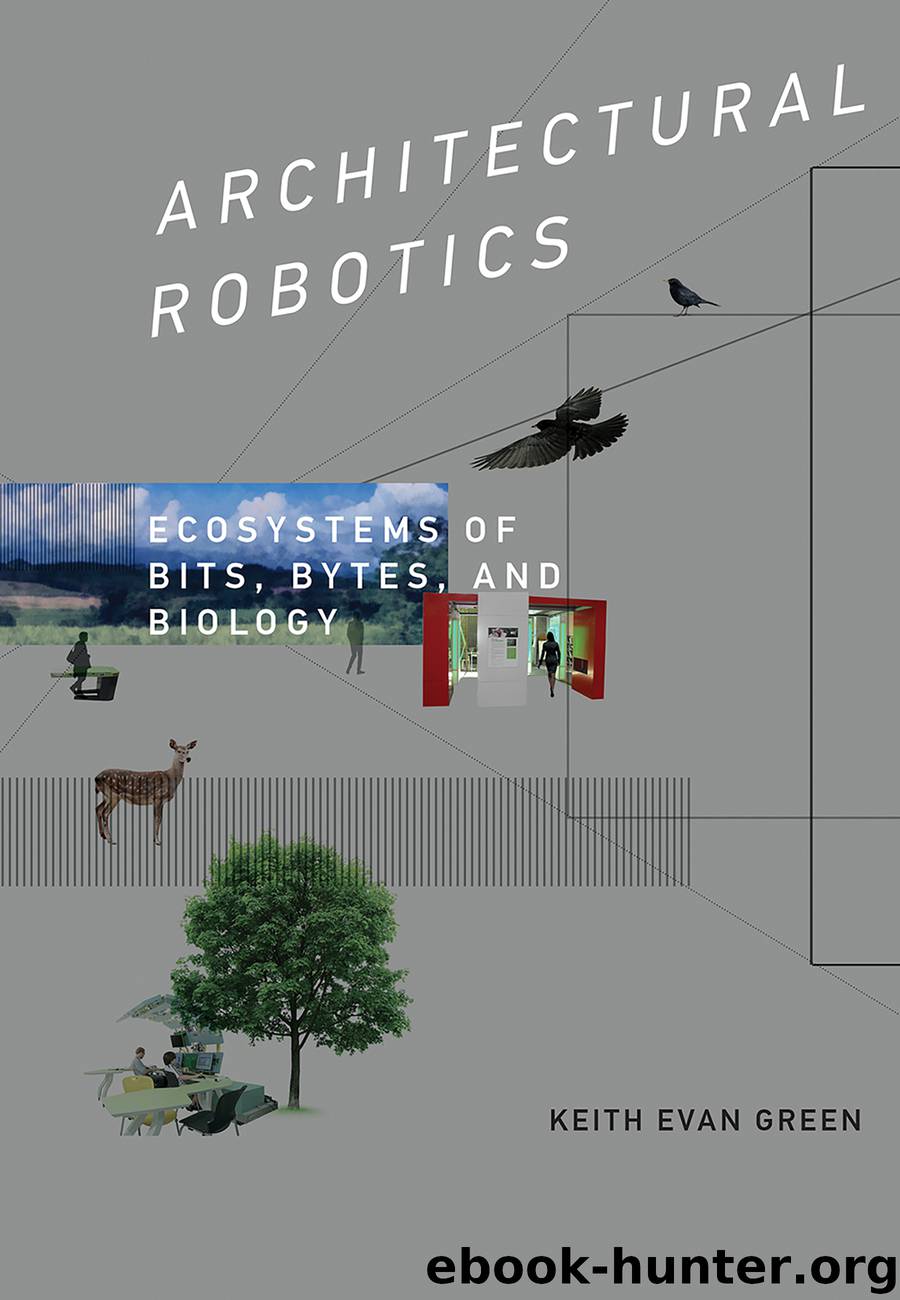Architectural Robotics by Keith Evan Green

Author:Keith Evan Green
Language: eng
Format: epub
Publisher: The MIT Press
Published: 2016-03-24T16:00:00+00:00
As Terry has finished explaining the overall concept of the book and how the LIT ROOM will support its reading, he begins reading Underground aloud to the group of children, again, using only his printed copy.
When Terry arrives at the part of the book where the characters begin their escape, he prompts Sam, an 8-year-old girl, to select from the various tablet options the image that represents the concept of escape. The correct image directly correlates with the illustration in the book. After Sam selects the correct image, the tablet changes to depict an image of running feet from the book and two words that express emotions. After reading a bit more from Underground, Terry asks another child, Henry, to consider what it might feel like to be running away from something he was trying to escape. Terry prompts Henry, who is now in command of the tablet, to pair the image of running feet with the word that best expresses that feeling. At Terry’s prompting, Henry correctly pairs the image of running feet with the word afraid (figure 10.6, far right, as displayed on our earlier, tangible cube interface again). With Henry’s correct pairing of icons, the LIT ROOM provides environmental feedback: its lights alternate bright-blue and red, and its robotic panels undulate to create a cluster of fast, chaotic movements representing a group of people moving together. Upon hearing the sound of people running through a forest, another child, Jenna, exclaims, “the shadows look like images of people running—the sounds make me think of times I’ve felt scared, too.” Terry continues reading, repeating the same process for the concepts of help and freedom.
After reading through the book once, Terry and the children discuss its major themes and decide to customize the environmental effects for each section by selecting the “Set-Up” menu from the tablet. As Daniela selects colors, sounds, and movements for the first section of the book, Terry asks her to explain her choices, providing an opportunity for her to leverage the LIT ROOM environmental effects to create deeper meanings and connections to the story. Accordingly, Adam and Jenna fine-tune the environment to evoke what they imagine to be the other two sections of the book, and Terry follows again with more discussion.
In their thirty minutes together, Terry and the children discovered that the LIT ROOM’s programmed configurations sometimes matched a child’s imagined space and other times provided the opportunity for the children to fine-tune the room through word-image couplets. In their final minutes together, Terry prompted the children to change the course of the book electively by reprogramming the environment: to explore different possibilities and outcomes (as in What-if?) to make visible their thoughts and desires.
Thinking Big by (First) Working Small
Given the larger physical scale and complexity of the LIT ROOM, we decided to start much more modestly, physically and technically. But we didn’t want the scaling down of this artifact to scale down our ambition. In our early research efforts, we sought a happy medium
Download
This site does not store any files on its server. We only index and link to content provided by other sites. Please contact the content providers to delete copyright contents if any and email us, we'll remove relevant links or contents immediately.
Kathy Andrews Collection by Kathy Andrews(11676)
The remains of the day by Kazuo Ishiguro(8738)
Paper Towns by Green John(5022)
Spare by Prince Harry The Duke of Sussex(4993)
The Body: A Guide for Occupants by Bill Bryson(4884)
Industrial Automation from Scratch: A hands-on guide to using sensors, actuators, PLCs, HMIs, and SCADA to automate industrial processes by Olushola Akande(4841)
Machine Learning at Scale with H2O by Gregory Keys | David Whiting(3964)
Be in a Treehouse by Pete Nelson(3875)
Harry Potter and the Goblet Of Fire by J.K. Rowling(3736)
Never by Ken Follett(3701)
Goodbye Paradise(3665)
Into Thin Air by Jon Krakauer(3261)
The Remains of the Day by Kazuo Ishiguro(3253)
The Cellar by Natasha Preston(3218)
The Genius of Japanese Carpentry by Azby Brown(3188)
Fairy Tale by Stephen King(3155)
120 Days of Sodom by Marquis de Sade(3115)
Drawing Shortcuts: Developing Quick Drawing Skills Using Today's Technology by Leggitt Jim(2960)
The Man Who Died Twice by Richard Osman(2953)
